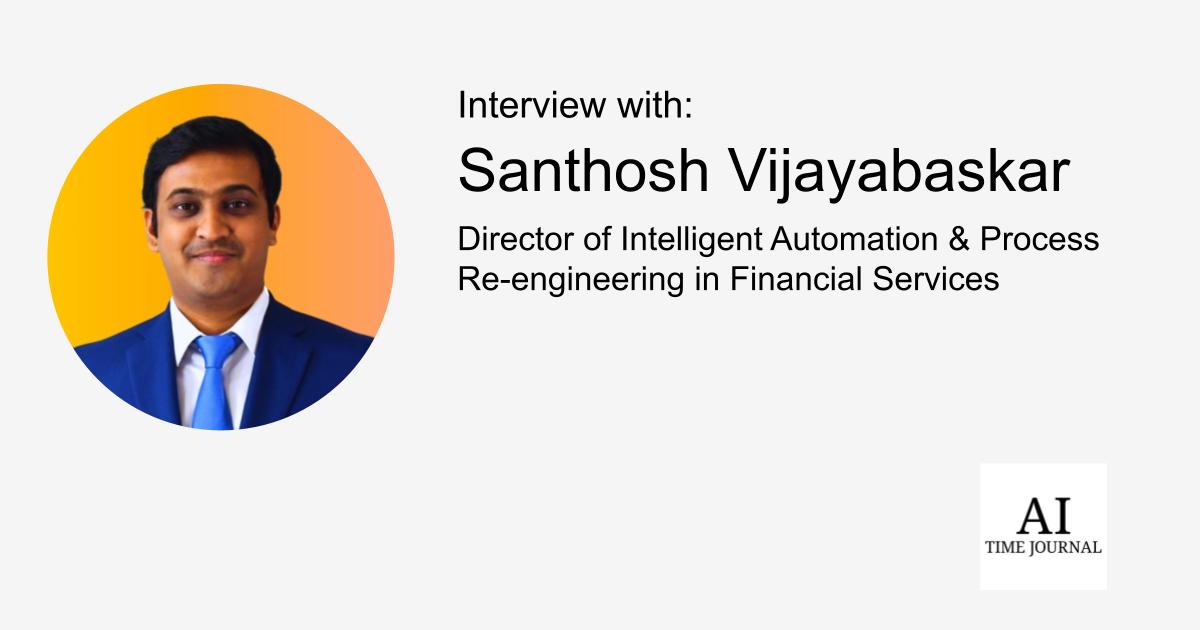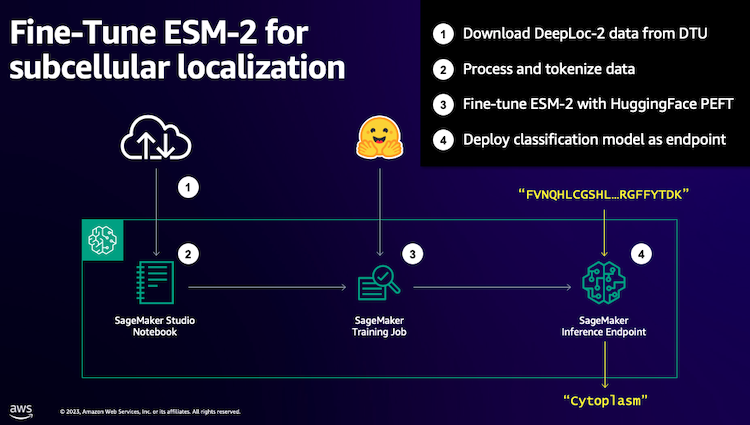In our latest interview, we speak with Santhosh Vijayabaskar, Director of Intelligent Automation & Process Re-engineering in Financial Services. With years of expertise in Robotic Process Automation (RPA) and Intelligent Automation (IA), Santhosh shares his perspective on how these technologies have evolved from simple automation tools to drivers of enterprise-wide transformation. He delves into key strategies for integrating AI with RPA, improving operational efficiency, and overcoming common implementation pitfalls. Gain insights on how automation can reshape workflows and enhance business outcomes in this informative discussion.
As an expert in Robotic Process Automation (RPA) and Intelligent Automation, how have you seen these technologies evolve, and what do you consider their most transformative impact on operational efficiency?
In the early days, RPA was primarily used to automate simple, repetitive tasks—essentially mimicking human actions in rule-based processes like data entry and step-by-step tasks. It was a great tool for quick wins but limited in scope due to its dependence on structured data. As organizations began to scale their automation efforts, RPA quickly hit a ceiling when faced with unstructured data or tasks requiring more complex decision-making.
That’s where Intelligent Automation (IA) stepped in, revolutionizing the space by combining RPA with AI technologies like Natural Language Processing (NLP), Machine Learning (ML), Computer Vision, and, more recently, Generative AI. IA allowed automation to evolve from a basic productivity tool into a driver of enterprise-wide transformation. It’s not just about automating tasks anymore—IA allows companies to reimagine entire workflows.
For example, in customer service, AI-driven chatbots can now handle a variety of customer queries, while RPA works behind the scenes to update CRM systems in real-time. This combination has reduced human intervention by up to 60%, allowing employees to focus on more strategic tasks. In my experience, the integration of AI with RPA has led to operational cost reductions of up to 40%, while simultaneously increasing accuracy and compliance. It’s a game-changer because it enables organizations to scale efficiently without having to scale their workforce in parallel.
When it comes to Process Excellence, what methodologies or frameworks do you believe are most effective in driving sustainable efficiency improvements through automation?
Process excellence is about creating efficient, adaptable, and sustainable workflows. In my experience, methodologies like Lean, Six Sigma, and Agile, when applied with AI-driven automation, can deliver long-lasting efficiency gains.
Lean is incredibly effective at eliminating waste and streamlining workflows. Simple tools like the 5 Whys and Value Stream Mapping can help identify inefficiencies before automation is even considered. This ensures that we’re automating optimized processes, not broken ones. For instance, I’ve seen Lean practices reduce unnecessary steps in a fintech process by 25%, which in turn made automation far more impactful.
Six Sigma focuses on reducing variation and improving quality through a data-driven approach. It’s important to clarify that achieving a full Six Sigma (99.99966% efficiency) isn’t necessary for every organization. It’s more about applying its principles to reach a sigma level that works for your goals—whether that’s 4-sigma or 5-sigma. I often use sig sigma tools like SIPOC (Suppliers, Inputs, Processes, Outputs, Customers) and DMAIC (Define, Measure, Analyze, Improve, Control) during the consulting phase and throughout the program to ensure that improvements are measurable and sustainable.
Agile methodologies are essential for dynamic business environments. The iterative development approach has consistently delivered faster results and greater stakeholder engagement in my projects. By blending these frameworks—Lean for waste reduction, Six Sigma for consistency, and Agile for flexibility—automation initiatives lead to sustainable, long-term efficiency improvements.
Could you elaborate on the role RPA plays in achieving seamless integration between existing business processes and emerging AI technologies?
RPA’s role as a bridge between traditional business processes and emerging AI technologies cannot be overstated. For many organizations, especially those with legacy systems that lack the flexibility to integrate AI solutions directly, RPA serves as a crucial intermediary. I often describe RPA as the “glue” that binds the past with the future—allowing organizations to leverage the power of AI without a complete overhaul of their existing infrastructure. Take legacy systems, for example.
Many industries, particularly in banking, insurance, and healthcare, rely on older systems that are stable but not designed to work with modern AI platforms. RPA can automate the interaction between these systems and newer technologies, such as AI-based document processing or customer sentiment analysis. I’ve seen cases where bots are used to extract data from legacy systems, structure it in a usable format, and feed it into an AI engine for real-time decision-making. This enables organizations to unlock AI’s potential for predictive analytics, machine learning, and even natural language understanding without needing to replace their entire infrastructure.
Beyond the technical integration, RPA also plays a critical role in operationalizing AI models. AI’s strength lies in its ability to analyze large datasets and make decisions based on patterns, but it’s RPA that takes those decisions and turns them into actionable workflows. For instance, in customer service, AI can predict the best course of action based on historical data, but it’s the RPA bots that carry out those actions, whether it’s sending follow-up emails, updating CRM records, or escalating cases to human agents when necessary. This seamless interaction between RPA and AI ensures that businesses can leverage AI insights in real time, driving more efficient and intelligent operations.
What are the key indicators you use to assess the success of automation projects, particularly in terms of improving operational efficiency and delivering measurable business outcomes?
When evaluating the success of an automation project, I look at several key indicators. The first is process time reduction. How much faster is the process being completed post-automation? In many of the projects I’ve led, process times have been reduced by as much as 30-40%. For high-volume tasks, this makes a substantial difference.
Next, I focus on error rate reduction. Automation should decrease the likelihood of human errors, which, in industries like finance or healthcare, can lead to costly consequences. In one financial services project, we reduced errors in a critical process from 12% to below 1%, significantly improving compliance and audit performance.
Financial outcomes are, of course, crucial. I typically measure return on investment (ROI) over a 6-12 month period. Most projects I’ve worked on achieve positive ROI within this timeframe, especially when factoring in labor cost savings and increased accuracy.
Finally, employee and customer satisfaction are key. Automation should free employees from repetitive tasks, allowing them to focus on higher-value work. Customers, on the other hand, benefit from faster service. In one project, customer satisfaction scores improved by 20% due to faster response times enabled by automation.
In the context of Intelligent Automation, how do you ensure that AI-driven processes remain adaptable to rapidly changing business environments?
To ensure AI-driven processes remain adaptable to rapidly changing business environments in Intelligent Automation, I focus on several key strategies:
- Modular, microservices-based architecture: This design allows components like RPA bots, AI models, or analytics engines to be updated or replaced independently, without disrupting the entire system.
- Continuous learning and feedback loops: AI models need regular updates with new data to stay relevant. For example, in a customer service application, the AI should adjust to new product interactions by learning from evolving customer queries.
- AI governance framework: Establishing governance helps monitor and adjust AI performance in line with business goals. Regular A/B testing, scenario analysis, and reviews keep AI aligned with strategic objectives.
- Human-in-the-loop approach: While AI can automate many processes, human oversight is critical for high-risk tasks. This balance ensures adaptability while maintaining control for refinement when necessary.
Based on your experience, what are the common pitfalls companies encounter when implementing RPA at scale, and how can these be mitigated to achieve process excellence?
One of the biggest pitfalls I’ve seen is failing to standardize processes before automation. Inconsistent processes across departments can lead to RPA breaking down or creating inefficiencies. The key is to ensure that processes are standardized and optimized upfront.
Another common challenge is change management. Employees can often resist automation due to fears of job displacement. In my experience, the best way to mitigate this is to involve employees early in the process, provide training, and clearly communicate how automation will enhance their roles rather than replace them. Finally, governance is critical. Without strong governance, RPA can end up siloed, with different teams creating their own automations. Establishing a Center of Excellence (CoE) ensures that RPA efforts are aligned, scalable, and compliant with best practices.
How do you see the future of Robotic Process Automation evolving with the increasing integration of AI, and what innovations are you most excited about in this space?
The future of RPA is deeply intertwined with AI. Cognitive RPA, where bots not only follow rules but also learn from data, will soon become the norm. This will allow bots to handle more complex, decision-based tasks. I’m particularly excited about the potential of Generative AI in RPA workflows. Imagine bots that not only execute tasks but also generate insights or even create new workflows based on evolving business conditions.
Hyperautomation, where RPA, AI, and analytics work together to automate end-to-end processes, is another trend I’m closely following. I’ve already seen AI-driven process mining tools identify inefficiencies that can then be automated using RPA, resulting in significant productivity gains.
In your work, how do you ensure that automation initiatives maintain a human-centric focus, ensuring that they complement rather than replace human decision-making?
In automation, my key principle is to augment human capabilities rather than replace them. A human-in-the-loop model is essential in ensuring that automation supports, rather than replaces, human decision-making. Automation should handle routine, repetitive tasks, allowing employees to focus on higher-value activities such as strategic decision-making, problem-solving, and client engagement.
In the financial services domain where I work, automation streamlines tasks like data reconciliation or compliance reporting, but critical decisions—such as approving large transactions or managing portfolios—still require human judgment. AI can analyze data and provide insights, but associates must interpret these insights, applying contextual knowledge to make informed decisions.
Equally important is change management. By involving employees early in the automation design process, gathering their feedback, and offering training, we can help them see automation as a tool that enhances their work. This approach fosters collaboration between humans and machines, leading to greater job satisfaction and improved outcomes.
From your perspective, how can organizations balance short-term gains in operational efficiency with the long-term strategic benefits of Intelligent Automation and AI?
Balancing short-term gains with long-term strategic value is one of the biggest challenges organizations face when implementing Intelligent Automation. Many companies are tempted to focus on quick wins—automating low-hanging fruit that delivers immediate cost savings—but this approach can limit the long-term potential of automation. To achieve true value, organizations need to take a phased approach that focuses on both tactical and strategic outcomes. In the short term, companies can prioritize automating routine tasks that yield immediate efficiency gains, such as data entry, claims processing, or invoicing. These projects provide a quick ROI and help build momentum for future initiatives. However, it’s crucial to tie these short-term projects to a broader automation roadmap that aligns with long-term business goals.
What advice would you offer to organizations looking to embark on their automation journey, particularly in industries that are highly regulated or face complex compliance requirements?
For organizations in highly regulated industries, such as finance, healthcare, or insurance, compliance should be a key consideration from day one of any automation project. My advice is to start by involving legal and compliance teams early in the process. Automation tools, especially in sectors with stringent regulations, must be designed with transparency and auditability in mind. In my experience, automating processes that handle sensitive data, such as financial transactions or patient records, requires strong governance frameworks to ensure that regulatory requirements are met without compromising efficiency. It’s also critical to select automation platforms that have built-in compliance features, such as audit trails, data encryption, and role-based access control. These capabilities are essential for ensuring that automated processes remain compliant with industry regulations.
Additionally, organizations should consider implementing AI ethics and governance frameworks to ensure that their automation initiatives are both ethical and compliant with evolving regulatory standards. For companies new to automation, my advice is to start small, automate a few key processes that offer immediate benefits, and then expand from there. By focusing on high-impact areas and ensuring that compliance is built into the foundation of the automation strategy, organizations can embark on a successful automation journey while maintaining regulatory peace of mind.



